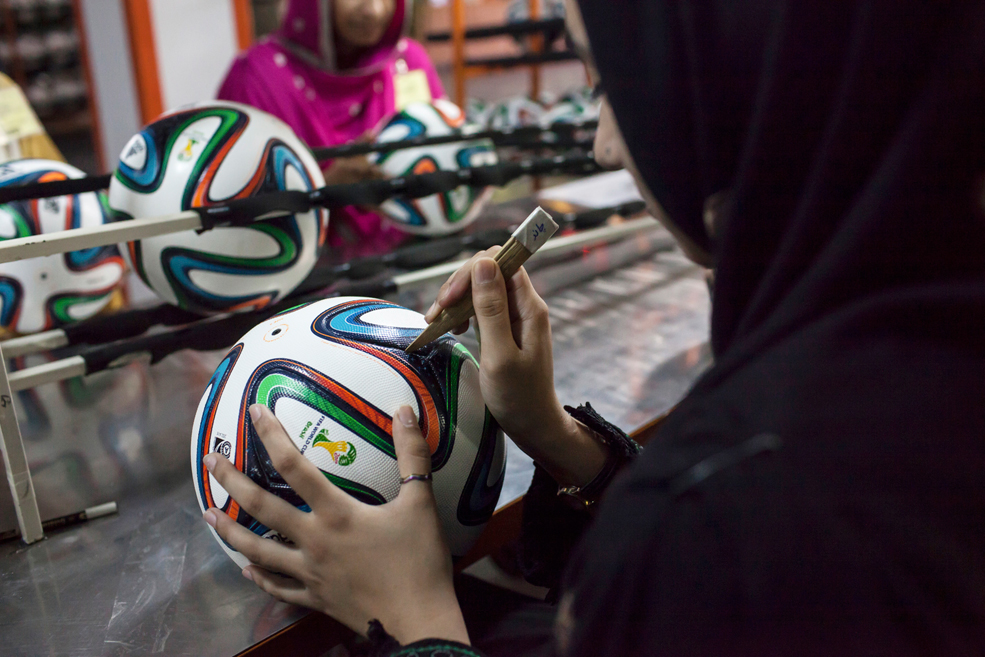From Pakistan to Brazil: An inside look at how the soccer balls for the 2014 World Cup are made
You can thank this group of hijab-clad women for expertly manufacturing the stars of this summer's biggest athletic event

As Khawaja Akhtar sat watching the 2006 World Cup, which was held in Germany, he felt that he was part of something bigger than himself. It was a good feeling — a new feeling, he told Reuters — and he decided that he wanted to replicate it for others.
When Adidas' Chinese supplier for this summer's World Cup soccer balls failed to keep up with demand, Akhtar saw his chance. The factory owner reached out to Adidas executives, inviting them to tour his plant in eastern Pakistan. Having made soccer balls for plenty of large tournaments before, such as the UEFA Champions League, Akhtar knew how competitive landing such a contract would be. The executives critiqued his "Stone Age equipment," and gave Akhtar a month to bring his production line up to snuff.
Usually, such a process can take the better part of a year, but Akhtar pulled off the impossible, designing, building, and moving the new equipment into his factory in just 33 days. Read the full story of Akhtar's unique accomplishment over at Reuters, and take a look at his factory employees creating the official soccer balls, below.
The Week
Escape your echo chamber. Get the facts behind the news, plus analysis from multiple perspectives.

Sign up for The Week's Free Newsletters
From our morning news briefing to a weekly Good News Newsletter, get the best of The Week delivered directly to your inbox.
From our morning news briefing to a weekly Good News Newsletter, get the best of The Week delivered directly to your inbox.








A free daily email with the biggest news stories of the day – and the best features from TheWeek.com
Lauren Hansen produces The Week’s podcasts and videos and edits the photo blog, Captured. She also manages the production of the magazine's iPad app. A graduate of Kenyon College and Northwestern University, she previously worked at the BBC and Frontline. She knows a thing or two about pretty pictures and cute puppies, both of which she tweets about @mylaurenhansen.
-
 Political cartoons for January 3
Political cartoons for January 3Cartoons Saturday's political cartoons include citizen journalists, self-reflective AI, and Donald Trump's transparency
-
 Into the Woods: a ‘hypnotic’ production
Into the Woods: a ‘hypnotic’ productionThe Week Recommends Jordan Fein’s revival of the much-loved Stephen Sondheim musical is ‘sharp, propulsive and often very funny’
-
 ‘Let 2026 be a year of reckoning’
‘Let 2026 be a year of reckoning’Instant Opinion Opinion, comment and editorials of the day


